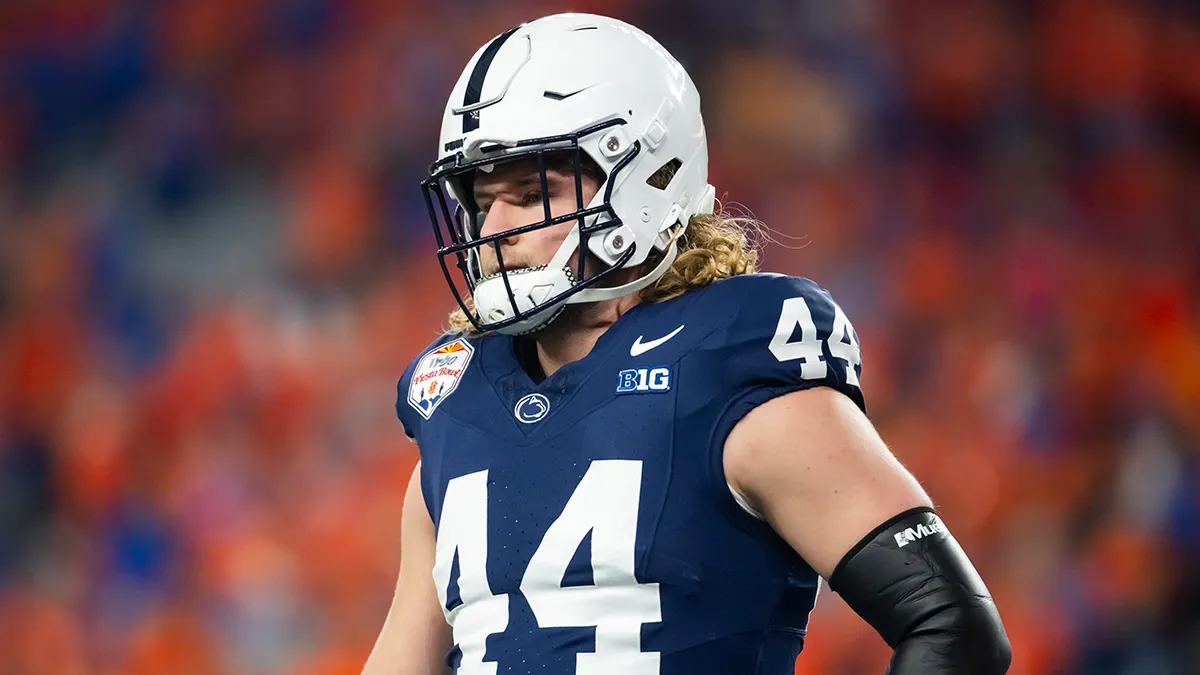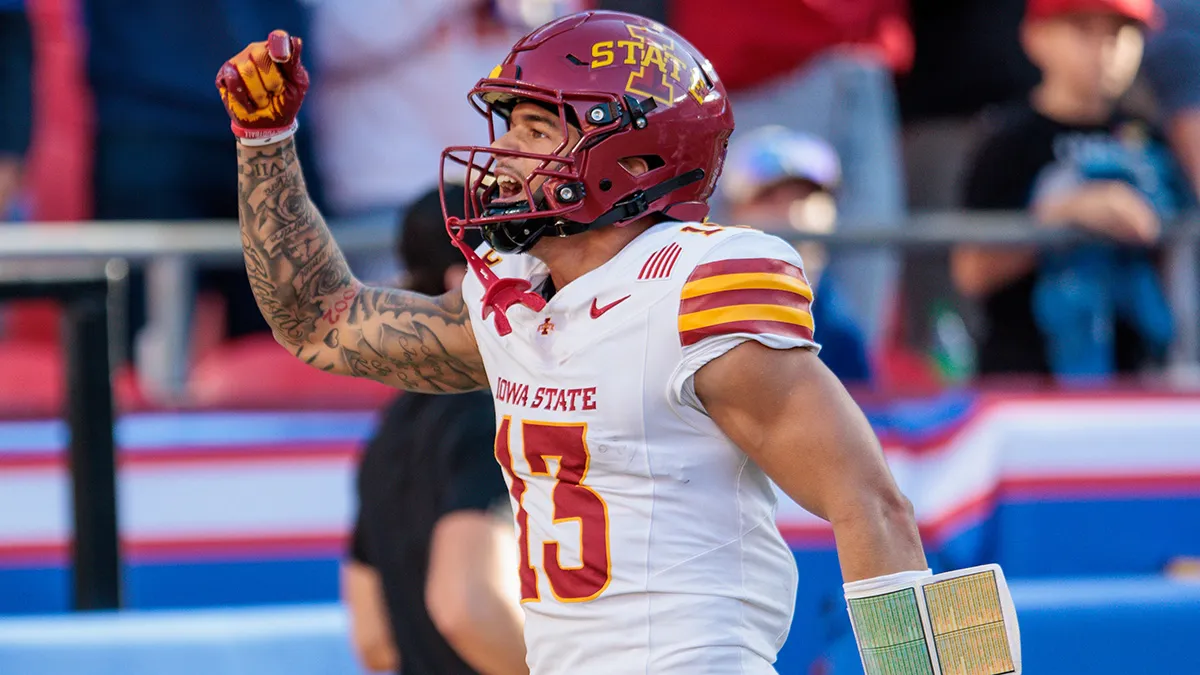Editor's Note: For the first time since the 2010 offseason, the Patriots are looking at a "full" offseason, without a trip at least as far as the AFC Championship Game. Tom E. Curran and Phil Perry are detailing the challenges facing the team going forward. Read Phil's column here and click here to listen to the latest episode of Tom Curran's Patriots Talk Podcast.
*****
The 2007 Patriots were among the greatest NFL teams ever assembled.
A machine. Nearly perfect.
So how, in just two seasons, did the Patriots go from the precipice of perfection to getting run off the field by the Baltimore Ravens in the Wild Card Round of the playoffs?
For some franchises, the 10-6 record the ’09 Patriots posted would spark a parade. Not here. Not after five AFC Championship Game appearances, four Super Bowl appearances and three Super Bowl wins in the previous eight years. The Patriots’ first decade of dominance ended with them limping to a 1-6 road record and that 33-14 loss to Baltimore in which it took the Ravens 13 minutes to build a 24-0 lead. At Gillette.
LIVE stream the Celtics all season and get the latest news and analysis on all of your teams from NBC Sports Boston by downloading the My Teams App.
New England Patriots
Find the latest New England Patriots news, highlights, analysis and more with NBC Sports Boston.
That happened with an in-his-prime Tom Brady at the controls of an offense that still had Randy Moss, Wes Welker, Kevin Faulk, Matt Light, Logan Mankins and Dan Koppen. On defense, there was Vince Wilfork, Ty Warren and Jerod Mayo and, of course, Bill Belichick was overseeing all of it.
What led to the rapid decline? How did the Patriots pull themselves so quickly from the morass so that, in 2010, they were the No. 1 seed in the AFC and in 2011 were back in the Super Bowl?
What does ’09 have in common with ’19? What’s different? Are the elements in place for a start-of-decade reboot in 2020 similar to the one in 2010? Can the Patriots embark on a third consecutive decade of dominance?
LOST SOULS
It was November 30, 2009, in the Louisiana Superdome. Belichick and Brady stood side-by-side on the Patriots sideline watching the Saints put the finishing touches on a 38-17 Sunday Night Football bludgeoning of the Patriots that dropped them to 7-4.
“Boy, I tell ya, we got a long way to go,” Belichick said to Brady with a resigned sigh. “We got a long way to go. We just have no mental toughness. We go on the road, no mental toughness.
“We can’t play the game the way we need to play it,” Belichick continued as Brady nodded agreement. “I just can’t get this team to play the way we need to play. I just can’t do it. So frustrating.”
Were it not for Belichick agreeing to let NFL Films go behind-the-scenes with him in 2009 for the incredible two-part “A Football Life” documentary, we’d be left to guess at the agitations Belichick was experiencing that season.
Thankfully, he did agree. And as a result, we see Belichick’s season-long effort to get that team to have the same kind of focus, resilience and maturity his teams had been known for.
Looking back, it’s easy to see why those Patriots were so drastically different than their predecessors. Tedy Bruschi and Rodney Harrison retired after the 2008 season. Mike Vrabel and Richard Seymour were traded. Those four players weren’t just the brains and brawn of the defense for a decade; they were in many ways the soul and conscience of the team.
With Scott Pioli leaving the personnel department to become the Chiefs’ GM, the yin to Belichick’s team-building yang was gone. Established veterans who’d done well with teams that didn’t run their business with the same authoritarian bent the Patriots did — Shawn Springs and Derrick Burgess — were brought aboard.
They joined a defense that — with Bruschi, Vrabel, Harrison and Seymour gone — suddenly had Adalius Thomas as its de facto alpha dog. Thomas, the team’s most highly-paid defender. had no qualms rolling his eyes at the way Belichick did things and younger players like Brandon McGowan, Darius Butler and Jonathan Wilhite seemed to follow his lead.
Jerod Mayo, in his second season, was the player Belichick hoped would grab the leadership reins and he was made captain. But there was a learning curve for him. Meanwhile, the locker room seemed uncharacteristically immature.
“I remember in 2009 during preseason I was the only captain and Bill was talking about leadership, leadership, leadership,” Mayo said on "Quick Slants The Podcast" in 2016. “Then the players brought it up [during the season] and the media was like, ‘Well maybe there is a leadership problem.’ When things aren’t going well, you start to question the leadership.
“But leadership is a funny thing,” he added. “You have the team and that’s 100 percent of the players. You have 10 percent here, who are good leaders. And there’s 10 percent who are bad leaders. And your job as a leader is to grab as many of the 80 percent left as possible.”
Mayo didn’t grab enough of the 80 percent that year.
An example? After a 31-14 win over the Jets in November — the week before the loss to New Orleans — McGowan, a safety from the University of Maine, spotted offensive lineman Mark Levoir passing by in the locker room. During the game, Levoir delivered a devastating block on a Jets defensive back. McGowan, in full voice, began loudly upbraiding Levoir for the block, complaining the Patriots defensive backs would have to deal with retaliation. Butler joined in, laughing.
“Are they yelling at you for blocking?” I asked Levoir.
“I guess so,” he said shaking his head.
Brady, who’d missed almost the entire 2008 season with his torn ACL, was getting back in the swing of things himself. At one point that season, I approached him in the locker room and mentioned to him how different the team seemed. Immature.
“We’re very, very young,” he said diplomatically.
PAPER TIGERS
The 2009 Patriots led the NFL in scoring, putting up 26.3 points per game. Included in there was the 59-0 snow-blown beatdown of the Titans and a pair of 35-7 wins over the Jaguars and Buccaneers (in London).
Their best performance against an objectively “good” team all season was the “Fourth-and-2 Game,” a 35-34 SNF loss to Indy. They could handle the bad teams with ease but up against talented, physical or well-coached teams the fight wasn’t so lopsided. Competency and incompetency came in spurts. Especially on defense.
Meanwhile, the offense was becoming overly reliant on Moss and Welker. The two combined for 2,612 receiving yards and 206 catches. The tight end position, manned by Ben Watson and Chris Baker, contributed 43 catches. Rookie Julian Edelman and Kevin Faulk had 37 catches each.
The Donté Stallworth-Jabar Gaffney complementary pieces of 2007 were absent in 2009. And the running game was tepid behind lead back Laurence Maroney (194 carries, 757 yards and nine touchdowns). Faulk, Sammy Morris and Fred Taylor were also in the mix, but none of them carried more than 73 times.
Click here to listen and subscribe to Tom Curran's Patriots Talk Podcast:
With Josh McDaniels having departed for the head coaching job in Denver, Bill O’Brien was in charge. The Patriots weren’t “easy” to defend with Brady, Moss and Welker involved, but a defense that could match those two left Brady looking to Faulk but with few other reliable options.
The day after the season ended, Belichick explained the exhaustive process the team would embark on to be better for 2010.
“The first thing we do is try to evaluate our team in all the things that we do — how much motion do we use, how each player played, what type of progress was made or wasn’t made, if there was a direction — whichever way the progress was going, whether going forward or if it was declining, and take a look at the team going forward in terms of what players we have, what players we don’t have and then gradually make determinations on how to improve those things,” Belichick explained.
“We’ll take a look at all of our practices, all of our mini camps, training camp schedules, all those things,” he continued. “We’ve done that a little bit along the way, but then we put all that together and discuss it, whether it’s as a coaching staff, or an organization, or sometimes in consultation with different players, whether it’s a specific situation or a group situation, whatever it happens to be.
“All that is put together, we talk about it and eventually we make decisions on players, on system, on scheme and how we do things. Some things stay the same and some things change. It’s inevitable there will be change next year.”
There was change. Culture change, personnel change and scheme change.
THE REBUILD
Players that would be indispensable in the retooling of the Patriots were in place before and during 2009. They just weren’t in prominent roles yet. Players needed to be cleared out in order for them to find their voices.
When 2010 began, Adalius Thomas was gone. So were Burgess, Springs, McGowan and Maroney. After the Patriots beat the Bengals in the season opener, Moss spent his postgame press conference complaining he hadn’t gotten a new contract. He was gone before Columbus Day.
Suddenly, young, recently-drafted players had a little elbow room — Mayo and Matthew Slater from 2008. Patrick Chung, Butler, Sebastian Vollmer and Edelman from 2009.
In 2010, the Patriots went rogue in the first round with Devin McCourty. They took a gamble in the second round on oft-injured Rob Gronkowski. They then dipped into the University of Florida pool of talent and came out with Aaron Hernandez, Jermaine Cunningham and Brandon Spikes who were, respectively, a great player/horrible human, an OK player and a pretty good player who was a bit of a handful.
Suddenly, a team without a tight end had two phenoms. The creeping reliance on vertical routes with Moss was reeled back in when the team brought Deion Branch back aboard. Brady sharing a brain with both Welker and Branch meant the offense was back to getting it out quickly again. Gronkowski and Hernandez became seam, middle-of-the-field and red-zone threats that couldn’t be handled. Maroney was replaced by the steady BenJarvus Green-Ellis. Danny Woodhead became Faulk’s understudy.
The defense was still a bit understaffed, especially on the back end, but offensively, the team was morphing. In 2011, the offense got even better through the draft with Nate Solder, Shane Vereen, Stevan Ridley and Marcus Cannon. And in 2012, Belichick spent first-round picks on Chandler Jones and Dont’a Hightower.
Five players from the 2008-2012 draft classes were still Patriots in 2019. Obviously, the draft isn’t the only way to import talent. The best free-agent signing of the Belichick Era, Stephon Gilmore, came aboard in 2017. The team got a lot from Brandin Cooks in 2017, a player they traded for. Malcolm Butler made some plays. So too have Jonathan Jones, David Andrews and J.C. Jackson. All were undrafted.
But the foundational pieces of the team that won Super Bowls 49, 51 and 53 came aboard mainly through the draft. There’s something to be said for hitting on homegrown talent.
A decade ago, the Patriots were in the midst of a harvest even if we didn’t realize it while it was going on. They got younger, better and more professional thanks in part to scraping relative bottom in 2009.
Now, after having been whisked from the postseason in the Wild Card round for the first time since that infamous Ravens loss, they find themselves retooling at the dawn of a decade.





